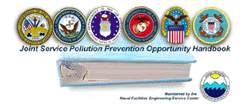Clean-In-Place (CIP) is a method designed to "automatically" clean pipes and process equipment without the time and labor requirement of manually dismantling equipment components. Long-term, CIP is less expensive and more consistent than conventional manual cleaning methods. CIP is not a substitute for the use of solvents, but rather, a more efficient way to use them.
CIP is more of a design method than a cleaning process. The CIP method works "automatically" by eliminating the places where residue can accumulate. This is achieved by placing pipes at an angle to the horizontal (minimum 3%) to improve drainage, and using instruments and valves that connect flush to pipes, thereby eliminating "dead legs" (places where residues can be trapped). CIP is perhaps best applied to batch process operations because the amount of residual product from a single batch can contaminate subsequent batches. Given the frequency of these operations, the CIP method is ideally suited to fast turnarounds and to achieving a high degree of piping and equipment cleanliness.
The CIP method can be improved with specially designed process equipment, piping, and fittings that have ducts and spray balls for cleaning the equipment internally. As of July 1994, only diaphragm valves have been used with CIP. Ball and slide valves can be modified with injection ports for use with CIP, but this makes them very complex. Plug and stem valves have been used successfully for these installations.
To enhance the CIP method, use a CIP cleaning system, which consists of a centralized control unit with satellite spray washing and rinsing units to clean the process equipment, pumps, valves and pipes. Also, use gear pumps with a low "dead" volume (where "dead" volume refers to the amount of void space that does not drain freely and as a consequence can be difficult to clean because material is stagnant and then dries or polymerizes). Mechanical drives have internal parts that have void spaces where residue can be deposited. Generally, these must be removed for cleaning. However, for difficult applications with rotating equipment such as agitators, magnetic drives can be used. As an alternative, spray devices can be installed in mechanical drives as well.
The CIP cleaning system is procured as a package consisting of a recirculation system: storage tank, pump, heat exchanger, and rotary strainer; a chemical feeder which makes the cleaning solutions; a cleaning system with spray balls and piping to supply and return the various solutions; solution-return tanks; and control instrumentation. After the chemical process is complete, activate the CIP cleaning system to clean and rinse the equipment, the cleaning can even be integrated into the process program.
According to the Deputy Force Environmental Advisor, N451 for U.S. Naval Forces Japan, a similar method employed by
the petroleum industry is a "pig" to clean product lines. Basically, it consists of a rotating head with brushes or
similar implement, a launcher and a retriever. To clean the pipe, the cleaner head is launched or propelled with
compressed air, cleaning the pipe as it goes. The cleaning head is recovered (retrieved) at the end of the pipe run. This
is particularly suited for longer pipe runs.
